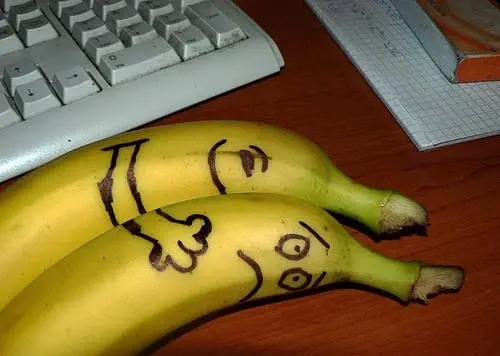I’m sick of having to look up what country an author is from to know which variant of teaspoon they’re using or how big their lemons are compared to mine. It’s amateur hour out there, I want those homely family recipes up to standard!
What are some good lessons from scientific documentation which should be encouraged in cooking recipes? What are some issues with recipes you’ve seen which have tripped you up?
I think a major one is to try to avoid trusting in unfounded precision.
If you want to make lemonade like a chemist, you don’t just weigh out some lemon juice and add it to water and sugar. You measure sugar and citric acid content of the batch of lemon juice, then calculate how much water will dilute it to the right pH, and how much sugar will bring it to your desired osmolarity. In reality, no one is going to do that unless they run a business and need a completely repeatable. If you get lazy and just weigh out the same mass of stuff with a new batch of lemon juice, you could be way off. Better to just make it and taste it then adjust. Fruits, vegetables, and meats are not consistent products, so you can’t treat them as such.
If i were to be writing recipes for cooking, I would have fruits/vegetables/meats/eggs listed by quantity, not mass (e.g., 1 onion, 1 egg), but i would include a rough mass to account for regional variations in size (maybe your carrots are twice the size of mine). Spices i would not give amounts for because they are always to taste. At most, I would give ratios (e.g. 50% thyme, 25% oregano). Lots of people have old, preground spices, so they will need to use much more than someone using whole spices freshly ground. I think salt could be given as a percentage of total mass of other ingredients, but desired salinity is a wide range, so i would have to aim low and let people adjust upward.
Baking is a little different, and I really like cookbooks that use bakers percentages, however, they don’t work well for ingredients like egg that I would want to use in discrete increments. For anything with flour, I would specify brand and/or protein level. A European trying to follow an American bread recipe will likely end up disappointed because European flour usually has lower protein (growing conditions are different), which will result in different outcomes.
I will say in defense of teaspoons, most home cooks have scales that have a 1 gram resolution, though accuracy is questionable if you are only measuring a few grams or less. Teaspoons (and their smaller fractions) are going to be more accurate for those ingredients. Personally, I just have a second, smaller scale with greater resolution.
I just want cups gone for solids (and viscous stuff). It’s such an idiotic system. 1 cup of diced carrot … wtf how should I go about measuring that in the grocery store? Just tell me 1 large carrot or by weight.
I know it doesn’t need to be exact but it just doesn’t make sense to do it this way. Even with imperial units, you have ounces, why not use that?
Food science is truly complex, so in order to accurately replicate a recipe, you need to standardize pretty much everything. Currently, there’s plenty of variation and you just compensate by winging it and keeping an eye on the pot a little longer.
In order to reduce variation, we need to standardize the following:
- ingredients: The composition of meat and carrots varies a lot.
- heating methods: An oven set to 200 °C is not exactly 200 ° at every location and all the time.
- weigh everything: Volumes are complicated and messy.
- use a timer: This applies to all actions like stirring, heating etc.
All materials and methods should be accurately documented, because things like the coating or weight of your pan can introduce unwanted variability.
Diameter of pots is big, too. You get way more evaporation with a wider pot.
You should check out the super old website called “cooking for engineers”.
Noooo it’s broken!
Yup, it’s broken (https://www.cookingforengineers.com/). Why?!!!
I’m an American biochemist, I also never learned the english system because my school transitioned to metric too fast. The mental burden of trying to cook using english units after working all day in the lab using that same part of my brain leads me to just not want to cook 95% of the time. But when I do cook I have optimized processes for my few simple recipes. When I bake I usually use a metric recipe or convert a English one, and optimize it before making a large batch of something.
I was a professional chemist for around ~7 and love to cook. My suggestion is to stop expecting precision with an imprecise and natural product like cooking. Are your lemons larger? They also might be sweeter, tarter, juicer etc. than others. Same thing with teaspoons. The spices you are using may be more or less concentrated than who wrote it.
Lean into the uncertainty and be free. Double or even triple spices to see if you like it. Measure with your heart
That’s just people who know how to cook, beginners want to follow recipes to a T and almost always come up with sub par results to someone who knows how to cook because they already incorporate what you’ve mentioned. This is just “make sure people cooking know how to cook” lol
I was thinking saying that expecting precision from a natural product is a fools errand. So embrace the imperfection and go crazy
Yep. imperfection is a feature not a bug.
Trying to eliminate every variable and be able to follow a precise formula is absurd. And if you manage to do that you are going to make food that is as good as what you can buy in the frozen section of any grocery store. That highly processed stuff is made by eliminating all the variables and following a precise formula.
Just enjoy the variation, taste your ingredients and food at every step you can and adjust until you like it.
Cooking is not a standardized or reproducible process at home, because the variables outside of anybody’s control. Modern mass recipes give only the illusion of being reproducible algorithms, but they will never achieve that.
Grappling with the complexity of different tooling, supply chains, seasonality and so on, all within a recipe, is a futile effort. That complexity must be handled outside the recipe.
Recipes should be written with the quantities in the procedure. So instead of reading
Mix flour, salt and sugar in a large mixing bowl
It should be
Mix flour (300g), salt (1/4 tsp), and sugar (20g) in a large mixing bowl
That way you don’t need to read/refer to ingredient list, read/refer to ingredient list, etc
I really appreciate the recent trend of done cooking websites to do this on mouseover. Best of both worlds for readability and convenience. Not great when you’re in the kitchen and not using a mouse, I’d hope a mobile or printable version just writes it out like you did there. Love Auto scaling recipes too where you can click to adjust number of servings, bonus points if they have some logic so they don’t tell you to use .71 eggs or something.
You should look for kitchen tested recipes.
All solids should be listed by weight.
All liquids should be listed by volume.
SI units only. (Grams for solids, mL for liquids)
More graduated cylinders and volumetric flasks in the kitchen please.
Why would you want anything by volume? Mass is so much easier. 50 ml of honey is way more annoying to get into a recipe than dumping it right into whatever container the rest of the ingredients are in while it’s sat on a scale.
5ml of vanilla is a lot easier to measure than by weight would be
Sure, we could say viscous liquids can use mass. I’d say most liquids with a viscosity close to water will be easier to measure out by volume than risk over pouring when going right into weigh boat / mixing bowl.
I agree. Mass all the way. It’s especially complicated when the liquids are viscous and stick to your measuring vessel.
The only time volume is permitted is if it’s too light for a typical kitchen scale to measure.
We should all use Einstein-Landauer units.

I thought SI Unit for volume is m3
True, but square and cubic units are inconvenient due to the way prefixes work. Use liters to solve that problem.
same thing, one cubic centimeter is one ml
But 1L is not 1m³
Liters are non-SI
1L is 1dm³ (10cm³)
They aren’t “official” SI units but they dont require funny conversions and i’d much rather see liters then teaspoons
Yeah I would also preffer liters even over m³. Was being pedantic on you saying it’s the same thing
Autist and scientist here: you’re thinking of baking. Baking is the science one, cooking is infuriating because all of those really vague and inaccurate instructions are in fact as precise and accurate as they need to be. Seasoning is done with the heart, you do have to stir or knead u ntil it “looks right”, “a handful” is the right amount to add. The only way to find the “right” amounts is to cook over and over until you instinctively know what enough looks like.
Anyway the ingredient I really really hate is from Jamie Oliver’s “working girl’s” pasta, where he lists “2 big handfuls of really ripe tomatoes”. I HAVE CANNED TOMATOES YOURE GETTING CANNED TOMATOES JAMIE, I DONT HAVE FUCKING TIME TO GO LOOKONG FOR REALKY RIPE TOMATOES
Also standard teaspoon is 5ml. Just use that and taste to see if it needs more.
That man fucks me right off. “Here’s how you can feed your family for a fiver”
Proceeds to use an entire fucking spice rack that’ll cost about 80 quid to get set up properly.
Sorry sib, but you gotta buy the spices. They’re like salt and oil, or pots and pans - you are almost always going to be using some of them, no matter what you’re cooking. It helps a lot to find an Indian supermarket, because you can get big packets of spices for much cheaper than the bottles in regular supermarkets.
Also too many spices has never been an issue I’ve had with Jamie, if anything I feel he overrelies on access to good quality ingredients. Yotam Ottolenghi is the spice dickhead, most of his recipes require a specific overpriced spice blend only he sells.
Even with baking, once you get good and learn what ingredients can be fanagled with, there’s definitely wiggling room like with cooking.
There is wiggle room in baking, but it relies on a deeper understanding of the ingredients than cooking. If a recipe wants 250g of flour and you only have 200g, you have to adjust the amounts of sugars and fats as well, and while the flavourings have a lot more wiggle room, some of them still require swapping out base ingredients for them to maintain the correct ratios.
With cooking if a recipe calls for 500g of potatoes and you only have 300g you can just put 300g in and keep cooking. Recipe calls for 300g tomatoes but you don’t want to waste the last quarter of your 400g can? We’re having an extra tomato-y sauce tonight. You have a lot more room to change ingredients around without it having a significant effect on the rest of the recipe.
This may be true for experienced cooks but beginners need more precise instructions that are not “Until it tastes good”.
Yes, and I’m explaining that a significant part of being an experienced cook is just the understanding that cooking isn’t precise. You do not need to work out what sized teaspoons the author was using, just get any of the teaspoons out of your drawer, fill it up, mix it in, and then taste to see if it seems ok. The final result will depend on factors you can’t control for - the conditions ingredients were grown in, the age of spices when they were ground, the specific cultivar you’re using - and the author doesn’t have your personal tastes, so while they can tell you the ingredients to use they can’t give you the precise amounts that you’ll enjoy. To find that out you need to make the dish repeatedly with small adjustments until you hone in on your tastes.
That may be true.
But for anyone not reading it and getting instructions like “Go by feeling” when I don’t even know if the dish tastes as it should be is like requesting me to run before I can even walk.And this cooking lession will sooner or later be revealed to a beginner but it’s very frustrating to think one cannot cook while it’s just a smaller skill-issue someone needs to overcome.
Thinking back on being a beginner, my problem wasn’t that instructions were imprecise, but more that I didn’t interpret “to taste” as a real instruction. It means I should fucking taste my food as I go, when at the time I would just taste it at the end.
So many bad meals can be avoided by sampling them over time and adjusting. I should know, having made too many.
I would classify this as an example of cooking logic (my own phrase) that needs to be learned. A lot of good recipes will assume the cook understands fundamental concepts like this, but it’s not necessarily the recipe’s job to teach you. Same as how IKEA assembly instructions might seem cryptic at first, but really boil down to using 3-4 different techniques to screw wood panels together. I do think there’s a general lack of awareness that cooking has a separate logic, and this means a lot of people never teach it to others.
Not any kind of scientist, but an adventurous home cook
I’d really like the USDA/FDA/etc. (maybe not under the current administration) to publish sort of a food safety handbook full of tables and charts for stuff like canning, curing meats, cooking temps, etc. targeted to people like me.
I’ve recently been experimenting with curing meats, I’ve done bacon, Montreal style smoked meat, corned beef, Canadian bacon, and kielbasa.
And holy fuck, is it hard to find good, solid, well-sourced information about how to do that safely.
And I know that information is out there somewhere, because people aren’t dropping dead left and right of listeria, botulism, nitrate poisoning, etc. because they ate some grocery store bacon.
I just want some official reference I can look at to tell me that for a given weight of meat, a dry cure should be between X and Y percent salt, and between A and B percent of Prague powder #1, and that it needs to cure for Z days per inch of thickness, and if it’s a wet brine then it should be C gallons of water and…
When I go looking for that information either I find a bunch of people on BBQ forums who seem to be pulling numbers out of their ass, random recipe sites and cooking blogs that for all I know may be AI slop, or I find some USDA document written in legalese that will say something like 7lbs of sodium nitrite in a 100 gallon pickle solution for 100lbs of meat, which is far bigger than anything I’ll ever work with, and also doesn’t scale directly to the ingredients I have readily available because I’m not starting with pure sodium nitrite but Prague powder which is only 6.25% sodium nitrite.
there are several of these from the usda!
https://nchfp.uga.edu/resources/category/usda-guide
they are really well made pdf’s with a lot of good info on exactly what you’re describing.
I make my own hot sauces and kraut.
Those are great, definitely gonna be saving those
I basically want that kind of guide for curing meats and other such things
Also there are some blind spots, something I was just looking for recently is canning some of my home-cured meats to save some space in my freezer. I know it’s a theoretically possible undertaking, I can go to the store and buy a can of corned beef after all
But reputable sources like the USDA and NCHFP are kind of silent on it and pretty much leave it at “we can’t recommend doing that, curing can change the density and water content and such and we haven’t gotten the funding to test it.”
I can find people who have canned their own bacon and such, and apparently not died of botulism, but I don’t exactly trust the processes cooked up by some off-grid homestead tradwife mommy-blogger.
And holy fuck, is it hard to find good, solid, well-sourced information about how to do that safely.
I have a similar experience with some basic fermenting (e.g. kombucha, pickling). I’m growing cultures of microbes like yeast and bacteria and while I’ve been able to spot some obvious unwanted cultures on failed batches, there’s a surprising absence of reputable info and unfortunately I’ve had to get by on the brewing equivalent of gym broscience, mostly on reddit, some of which I’ve spotted is misinformation. The SEO AI-generated articles plaguing search results don’t help either.
They do publish pretty good information about home canning, though in batch sizes more and more of us aren’t going to do because we’re not putting up 10 acres worth of vegetables.
not exactly an answer to what you ask but I wanted to share this knowledge: https://developers.google.com/search/docs/appearance/structured-data/recipe
its a standard(ish) schema that many popular recipe websites use, so you can very easily parse them and do unit conversions
Cool stuff, thanks for sharing!
This would only make sense, if all people were baking with the exact same ingredients, in the exact same environment, with the exact same equipment. You know, like in a factory.
For households and the like, it makes sense to have a bit of variation, until you find the way that makes it perfect for you.
People should try to think of recipes as performance notes, not as magical formulas. “This is how I made this, this time.”
This is pretty much how so many experienced home cooks eventually get to the point where they can eyeball the amount of each ingredient they need.
So you’re basically telling chefs to research and write out for you all the variables?
Baking is a science, cooking is an art.
Every recipe handed down through generations has notes, changes, etc…that’s what makes it beautiful.
I am lucky to have my grandmother’s cook book with 3x5 index cards hand written, with the date and whom the recipe is from…but I don’t use lard in her Ginger Bread recipe from 1932.
There is no exact science you’re looking for, the garlic grown here won’t be the same as the garlic grown there, your experience won’t be the same as someone who has cooked for years saying ‘fuck it, throw that in there and let’s see what happens’.
…lol, amateur hour
(to be clear, I was saying ‘amateur hour’ tongue-in-cheek ;)
I am lucky to have my grandmother’s cook book with 3x5 index cards hand written, with the date and whom the recipe is from…but I don’t use lard in her Ginger Bread recipe from 1932.
That’s wonderful! All I got was a disintegrating notebook of delights. I do like deciphering it but not when I’m hungry!
I get it!
Now to really boil your noodle I used to work with a lot of (French) chefs who when they wrote out recipes for magazines and such (pre internet) they DGAF if it was accurate or not… “if zey screw eet up, zey sink it is zere fault”
Haha I wonder if they just didn’t want to share their secrets!
The only secret French chefs have (and they will deny this) is that they love Ketchup










